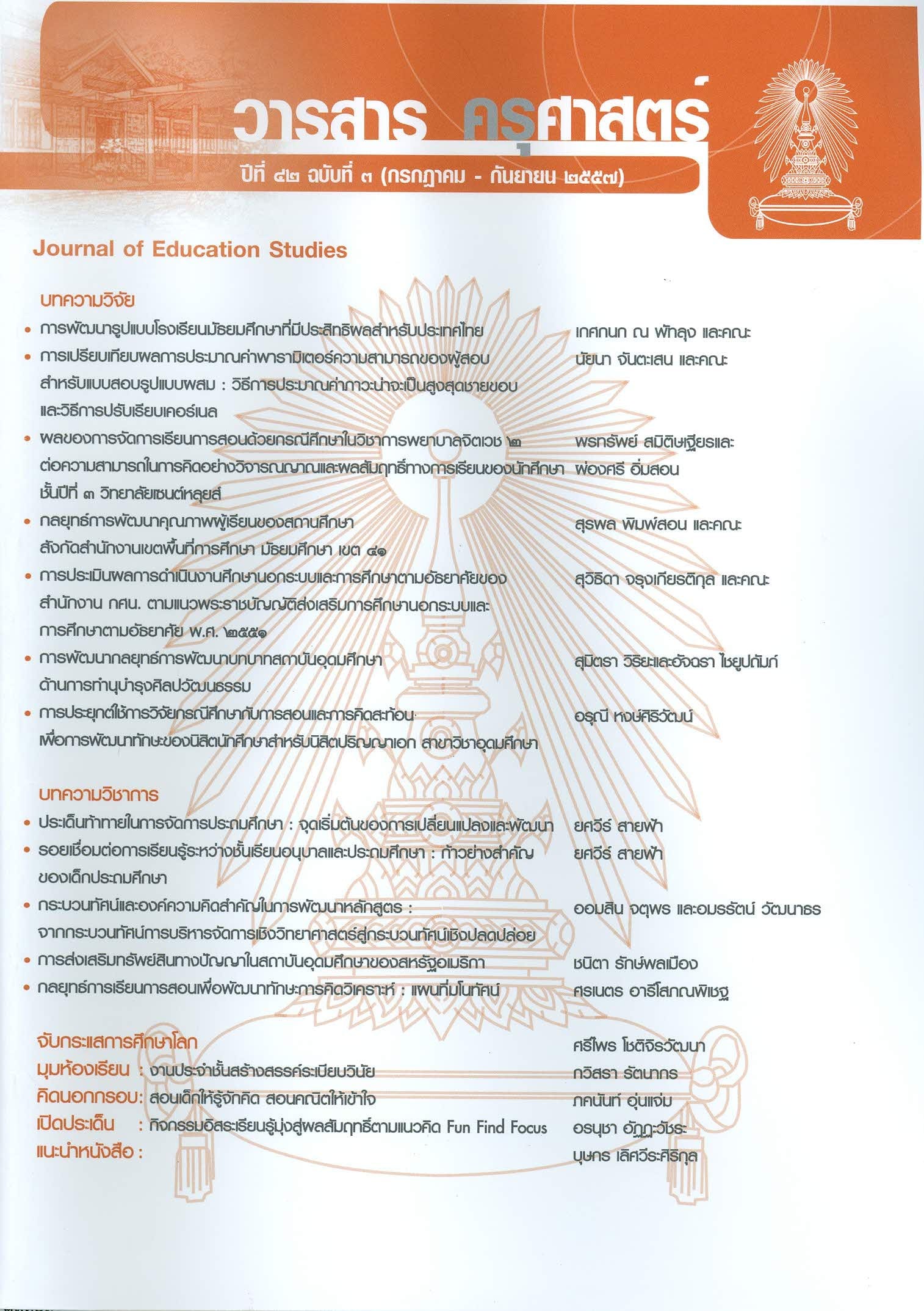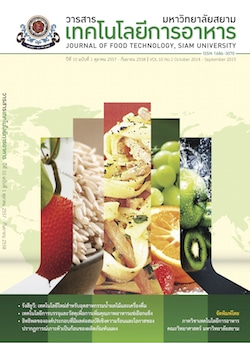การส่งเสริมทรัพย์สินทางปัญญาในสถาบันอุดมศึกษา ของสหรัฐอเมริกา
ABSTRACT
นานาชาติให้การยอมรับว่าการส่งเสริมทรัพย์สินทางปัญญาซึ่งเป็นผลจากความคิดสร้างสรรค์ และนวัตกรรมมีความสำคัญอย่างยิ่งต่อการกระตุ้นความเจริญเติบโตด้านเศรษฐกิจและการพัฒนาสังคม ของโลกในศตวรรตที่ ๒๑ ที่เน้นการเป็นสังคมฐานความรู้ หลายประเทศจึงได้กำหนดนโยบายส่งเสริม สถาบันการศึกษาในฐานะกลไกขับเคลื่อนที่สำคัญของวงจรทรัพย์สินทางปัญญาซึ่งประกอบด้วยการ สร้างสรรค์ การป้องกัน และการใช้ประโยชน์ในเชิงพาณิชย์ สหรัฐอเมริกาเป็นประเทศผู้นำในด้านการ ส่งเสริมบทบาทสถาบันการศึกษาในด้านนี้นับตั้งแต่มีการปฏิรูปกฎหมายเพื่อส่งเสริมทรัพย์สินทาง ปัญญาซึ่งได้ประกาศใช้กฎหมายสำคัญโดยเฉพาะ “Bayh-Dole Act” ในปี พ.ศ. ๒๕๒๓ กฎหมายดังกล่าว ส่งผลต่อความสำเร็จของมหาวิทยาลัยต่างๆ ในการถ่ายทอดเทคโนโลยี อาทิ มหาวิทยาลัยสแตนฟอร์ด ซึ่งก่อตั้งซิลิคอน แวลเลย์ เป็นต้น รัฐบาลของหลายประเทศจึงได้หันมาให้ความสำคัญกับการถ่ายทอด เทคโนโลยีจากมหาวิทยาลัยไปสู่ภาคอุตสาหกรรม ดังเช่น ประเทศญี่ปุ่นที่ได้มีการประกาศกฎหมาย ส่งเสริมการถ่ายทอดเทคโนโลยีระหว่างมหาวิทยาลัยกับภาคอุตสาหกรรมเมื่อ พ.ศ. ๒๕๔๑ และกฎหมาย พิเศษเพื่อสร้างความเข้มแข็งให้ภาคอุตสาหกรรม พ.ศ. ๒๕๔๒ ที่เรียกกันว่ากฎหมาย “Bayh-Dole ภาคญี่ปุ่น” เป็นต้น ต่อมาใน พ.ศ. ๒๕๔๕ มีการประกาศนโยบายมุ่งสู่ “การเป็นประเทศที่สร้างบนฐาน ทรัพย์สินทางปัญญา” พร้อมกับตรากฎหมายพื้นฐานว่าด้วยทรัพย์สินทางปัญญา ส่วนสาธารณรัฐเกาหลี ก็ได้ประยุกต์รูปแบบการส่งเสริมทรัพย์สินทางปัญญาของสหรัฐอเมริกาโดยมีการตรากฎหมายว่าด้วย การส่งเสริมการถ่ายทอดเทคโนโลยีเมื่อเดือนมกราคม พ.ศ. ๒๕๔๓ และกฎหมายเพื่อส่งเสริมการศึกษา และความร่วมมือด้านอุตสาหกรรม พ.ศ. ๒๕๔๖ ผลจากการประยุกต์ใช้รูปแบบของสหรัฐอเมริกาทำให้ ทั้งสองประเทศต่างประสบความสำเร็จในการส่งเสริมให้มหาวิทยาลัยทำบทบาทด้านทรัพย์สินทางปัญญา เมื่อพิจารณาจากจำนวนสิทธิบัตรที่จดทะเบียนและมูลค่าจากการใช้ประโยชน์ทรัพย์สินทางปัญญา ในเชิงพาณิชย์ การศึกษาบทบาทของสถาบันอุดมศึกษาในสหรัฐอเมริกาจึงเป็นบทเรียนสำคัญสำหรับ การส่งเสริมทรัพย์สินทางปัญญาโดยเฉพาะการใช้ประโยชน์จากงานสร้างสรรค์ นวัตกรรม และสิทธิบัตร
It has been widely recognized that promoting intellectual property (IP) resulting from creativity and innovation is essential to the advancement of the world’s economy and social development in the twenty-f irst century which emphasizes a knowledge-based society. Many countries have given importance to educational institutions and their roles in the intellectual property cycle; namely, creation, protection, and commercialization. The United States has played a leading role since the IP reform and the passing of the Bayh-Dole Act in 1980. At the higher education level, it is also noteworthy that the US model is highly recognized after the success of universities’ technology transfer such as Stanford University’s Silicon Valley. Since then, the issue of technology transfer from universities to industries has been on the political agenda in many countries, including Japan and South Korea. In Japan, the 1998 Law for Promoting University-Industry Technology Transfer and the 1999 Industrial Revitalization Special Law known as “Japanese Bayh-Dole Act” were promulgated. Moreover, in 2002, the government approved an important law titled “Basic Law on Intellectual Property” and announced their ambition to become an “IP Nation”. Using the American model, South Korea promulgated such laws as the 2000 Technology Transfer Promotion Law and the 2003 Law for Industrial Education Promotion and Collaboration Boost. The universities in these two countries are highly successful in promoting intellectual property when considering the numbers of patents and generated incomes from IP’s commercialization. Lessons learned from the United States are thus imperative for the utilization of creative work, innovation, and patents.






